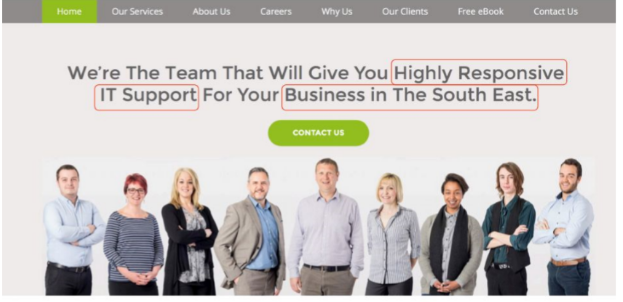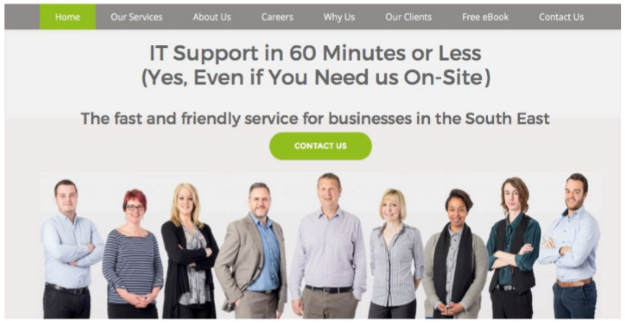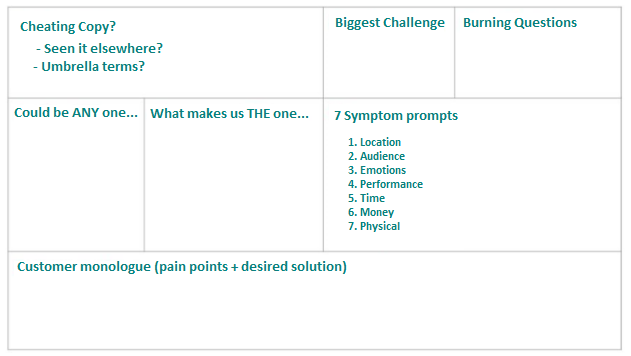It’s not common for SEO marketers to be hyper-focused on traffic goals and forget about the ultimate end goal: to make money. It’s awesome if someone lands on your website from a search engine result page – but what happens next? Are you giving the user a clear path, or focus point to direct them to take action? Will the user sign-up for more content or make a purchase?
I attended the Unbounce Call-to-Action Conference in Vancouver to learn more ways to incorporate conversion rate optimization (CRO) into my SEO thought process. An international affair, the Unbounce Call-to-Action Conference is a two-day strictly digital binge on textbook marketing – people, persuasion, and presentation. There are many things that our Canadian neighbors do great; of those making the top of the list, (next to poutine gravy flights and hockey fights) is the ability to host a kick-ass marketing conference.
Arriving back from the conference inspired and ready to optimize conversions, I’ve compiled the three main conversion rate optimization rules every marketer should incorporate into their strategies.
The First Rule of CTAs: Have a F@&%ing CTA
Every landing page should have a conversion opportunity, and every conversion opportunity needs a corresponding call-to-action (CTA) in order to be successful. This is the main principle that guides Oli Gardner’s, the founder of Unbounce, 8 step “Conversion Equation." "If you’re expecting to make money, I’d highly recommend that action be to convert users (either into a sale, or at least a lead)." - Oli Gardner
While engaging language, relevant content, and hyper-targeted strategies are the best practices we all try to follow, we’re all probably a little guilty of asking too much of our customers.
Fixated on over-optimizing landing pages for search engine rankings, webmasters often fail to consider what we want a customer to do once they arrive onsite. Even if you can cleverly plot the breadcrumbs, we fail our customers by not making it clear and easy for them to reach their ultimate goal. Oli’s advice to make this happen:
Pick one thing and make it easy for your customers.
Want more awesome advice from Oli? Catch up with him at our event.
One of the best ways to approach this is by directly asking your customers! While pricey software promises to do this for you, Oli recommends just speaking to your customers first-hand. To incorporate this into your own campaigns, you’ll need to request a handful of test subjects and five seconds of your time from your boss.
The Five-Second Test
Ingredients:
- A handful of test subjects (unfamiliar with your brand)
- A screenshot of your landing page
- Five seconds
Directions:
- Show your test subjects a screenshot of your landing page for a five-second time slot
- Remove the image
- Ask your customers to describe what the landing page is about
- Ask your customers what the main CTA is for the landing page
Expected outcome: A healthy portion of reality that your landing page is designed for search engines, not people.
If you run this test and come to find out that your landing page is not encouraging the actions you were hoping for, Oli recommends clarifying the page intent for your users. He recommends aiming for a design that encourages delight by eliminating distractingly-hyperbolic language, improving readability, and setting expectations with the user up front. Here’s how to start creating better landing pages:
- Minimize distraction
- What do you want the user to do? Pick one thing and make it clear.
- Eliminate hyperbolic language
- Are you explicitly illustrating what you actually do, or just saying you’re really good at doing it?
- Improve page readability
- Are your images and titles supporting your objective?
- Set expectations up front
- Make your CTA straightforward and concise
- “Start Now” versus “Proceed to Billing”
Pro Tip: Use the Dejargonator, a Chrome extension to audit hyperbole/jargon on a webpage.
Oftentimes, we’re all a bit guilty of asking too much of our customers at once. By applying these simple concepts of psychology to our landing page offers, we can map out clear conversion opportunities for our users.
Don’t Try to Be Everything to Everyone
Another common pitfall that SEOs are often susceptible to is trying to target everyone at once with their message. While this has proven successful for search engines, webmasters might also notice that while their traffic is going up, conversion rates may go down. This is a result of bringing in more, but highly unqualified leads.
Optimizely’s Cara Harshman came armed with data to prove how to fix this issue:
Make your marketing more personal!
Of all the big statements made at the conference, nothing quieted a room quicker than Harshman’s claim that the homepage is “dead”. When you pick up your jaw and digest this statement a bit more, how often do you find that your homepage drives the highest number of leads or the largest social shares? Not often.
According to Harshman, audiences fall onto two axes: behavioral and demographic. Behavior is what they do, and demographic is who they are – both of which are equally important to address in your digital strategy.
Once you identify your target audience, you have to ask yourself what the inputs for personalization might look like. Ask yourself:
- Who are your most important customers?
- What can I say or do to show them how important they are?
- Where is the best place to deliver this message?
From a content marketing perspective, this starts with investing in an inventory of unique, highly personalized content and page structure that helps solve a user’s specific problem. Specifically, for educational content, it is important to figure out how to educate visitors about your product or unique selling point (USP) in the most appropriate format and channel for that audience.
To conquer the stale, stagnant content strategy, marketers should strive to capture quality leads over more leads. How do you start?
- Perform an audience analysis
- Develop well defined personas
- Segment your existing audience into these personas
- Design landing pages to be personalized, adding valuable content that is relevant to the user first
- Test, measure, repeat
Here’s an example of an end product shared by a visitor of Optimizely and also a Microsoft employee.
Harshman points out that all the elements above can be dynamically swapped to target your specific audience; from imagery to messaging. She also alluded to the five-second test: if your call-to-action doesn’t make an impression in the first five seconds of a visit, you may be missing out on a high volume of qualified leads.
Make Your Brand Authentic
Making an impression on your users means standing out from a crowd; people want to interact with a brand that is thorough, reliable and trustworthy. While “authenticity” isn’t a metric that can be easily measured or manipulated, there are ways to modify your existing content strategy to work in purpose.
Oftentimes, when optimizing content for search engines, we force keywords into a message that tends to sell our story short. This means getting cheated out of a compelling, unique message because you’re looking to optimize a page over delight an audience.
Amy Harrison, copywriter and consultant, equates a disingenuous content strategy to romantic relationships.
How do you know if your copy is cheating you? When you see it hanging around other sites.
Cheating copy means you have content that could be on any old website, not engaging content that users want to remain loyal to. Here’s an example of highly optimized content that cheats a brand from having a succinct, unique selling proposition:

Image Source Credit: Unbounce, Amy Harrison
Beyond the generalized messaging strategy, the imagery and call-to-action do little to help the user understand exactly what this brand is providing. By digging a bit deeper into the site, you get more specifics around what makes the site great. Conversely, Harrison recommends integrating these features directly into your value proposition:

Image Source Credit: Unbounce, Amy Harrison
Instead of confusing your users and making them work for the information, there are several tactical approaches to making your copy fall in love with you all over again:
-
- Conduct Customer Surveys
- Ask customers about their challenges and questions, allowing you to categorize these and address them directly in your content marketing strategy
- Diagnose Customer Problems
- Looking at customer “symptoms” of a poor experience gets you closer to understanding their end goal. By acknowledging the problems and providing a solution, you can personalize your features to qualify yourself as a highly qualified source of solutions.
- Change Your Perspective
- Content is often written about the customer, without really understanding their pain points. Instead, focus on writing a monologue from your customer’s perspective, highlighting points that directly point out a problem they are looking to solve.
- Conduct Customer Surveys
Pro tip: Below is a cheat sheet for how to catch a cheating copy in the act, integrating the elements above to alter your content to be more authentic, and creating a value proposition that is truly “unique”.

Image Source Credit: Unbounce, Amy Harrison
If we can rise above the noise and the sales pitches, we might be able to help our customers get something accomplished, and be the brand we want to be.
For more insights into conversion rate optimization implications on your SEO strategy, check out our CRO Services!

